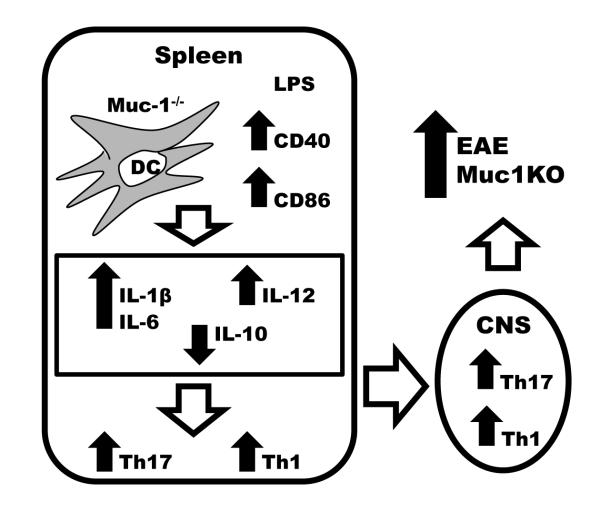Fig. 9.
Model for the role of Muc1 in EAE.
Lack of Muc1 in DC results in stronger activation of T cells through increased expression of costimulatory molecules, and in the upregulation of proinflammatory cytokines leading to preferential differentiation of proinflammatory subsets of effector Th1 and Th17 cells. The generation of higher numbers of pathogenic Th1 and Th17 cells in the absence of Muc1 leads to EAE disease exacerbation.

